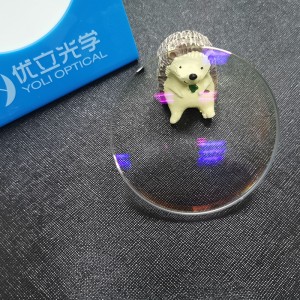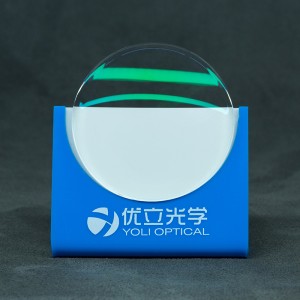
1.67 Semi Finished Lens Blanks Provide a Wide Variation of Optical Combinations for Wearer Needs
What Semi Finished Lens Blanks Can do?
Spectacle lenses production units that transform semi-finished lenses into finished lenses according the precise characteristics of a prescription.
The customization work of laboratories enables us to provide a wide variation of optical combinations for wearer needs, especially as regards the correction of presbyopia. Laboratories are responsible for surfacing (grinding and polishing) and coating (coloring, anti-scratch, anti-reflective, anti-smudge etc.) the lenses.





Advantages of High-Index Lenses
·Thinner. Because of their ability to bend light more efficiently, high-index lenses for nearsightedness have thinner edges than lenses with the same prescription power that are made of conventional plastic material.
·Lighter. Thinner edges require less lens material, which reduces the overall weight of the lenses. Lenses made of high-index plastic are lighter than the same lenses made in conventional plastic, so they're more comfortable to wear.

Technology for freeform lenses
• Provides the flexibility to offer a wider range of high level products, even for the smaller optical laboratory
• Only requires a stock of semi-finished spheres in each material from any quality source
• Lab management is simplified with significantly fewer SKUs
• Progressive surface is closer to the eye - providing broader fields of view in the corridor and reading area
• Accurately reproduces the intended progressive design
• Prescription accuracy is not limited by the tooling steps available in the laboratory
• Accurate prescription alignment is guaranteed











